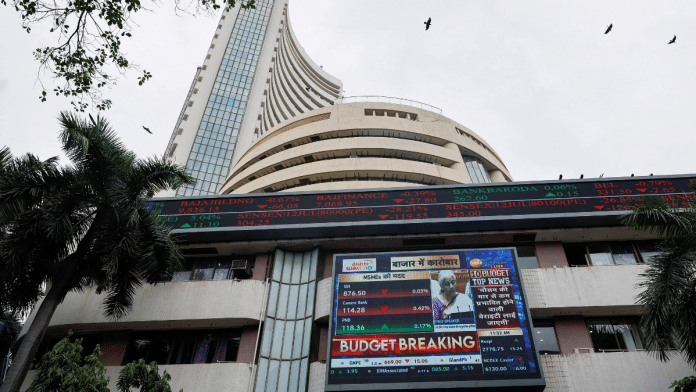Thank you dear subscribers, we are overwhelmed with your response.
Your Turn is a unique section from ThePrint featuring points of view from its subscribers. If you are a subscriber, have a point of view, please send it to us. If not, do subscribe here: https://theprint.in/subscribe/
The Indian stock market with a valuation of ~US$5.3 trillion is now the fourth largest in the World behind US, China and Japan. For context, the value of stock market was just shy of US$1 trillion in 2014 which reflects nearly 430% increase over last 10 years. The market value accounts for 140% of the country’s GDP as of 2024.
The credit for this robust growth could be attributed to multiple factors such as rise in corporate earnings, increase in income levels, reduction of corporate tax, improving country’s fiscal position, stable government at centre, among others. However, a key contributor is the changing mindset of middle-class people who have shifted their focus towards capital markets in anticipation of higher returns and lower tax bracket (20% for STCG and 12.5% for LTCG) in comparison to FDs which are taxed at slab rate. This change in focus can be substantiated by number of demat accounts that have surged from 36 million in March 2020 to 160 million in June 2024.
With rise in white collar jobs and income levels, people’s appetite for riskier investments such as stocks, mutual funds, and F&O is growing in comparison to stable returns from FDs, pension scheme, and insurance annuity scheme. The retail investors have bought into the idea of India’s growth story of becoming the third largest economy before next general elections and its target of achieving a developed nation status by 2047.
For salaried professionals Systematic Investment Plans (SIP) in mutual funds are preferred way to invest in the market. In July 2024, mutual funds saw an inflow of 23,332 crores which is 9.7% more than previous month. The fund managers are tasked to invest this money into equities across different schemes. This is a key reason that despite Foreign Institutional Investors (FIIs) selling their position, the market continue to hold steady as domestic investors are key buyers in the market.
The confidence and optimism of domestic investors are reflected in the fact that market remained stable or recovered swiftly after facing some concerning and unexpected scenarios over past few months. These can be highlighted as formation of coalition government post general elections, increase of capital gain taxes in FY24 budget, analysts flagging high valuation concerns, reports of US being on cusp of recession and latest disclosure by Hindenburg of alleged involvement of SEBI chief in Adani issue.
One industry that has been on the receiving end of the robust stock market growth is banking sector, as account holders are opting for higher yield investments in capital markets instead of bank deposits. As per RBI report, for the period of June 2024, bank deposits declined by 10.6% whereas credit disbursements grew by 13.8%. RBI governor has flagged this issue as it could put strain on banking system if credit growth outpace deposit on consistent basis. This change in consumer preference would push commercial banks find non-core avenues of income generation in the form of service fee, commission, brokerage and others.
However, to keep this momentum getting out of hand, the regulatory bodies like RBI, SEBI and Ministry of Finance need to keep a watchful eye on the investment inflow in capital market, valuation levels, and trajectory of NPAs across banking sector. The rising optimism and over enthusiasm from domestic investors must not overshadow realism and prudence.
These pieces are being published as they have been received – they have not been edited/fact-checked by ThePrint


